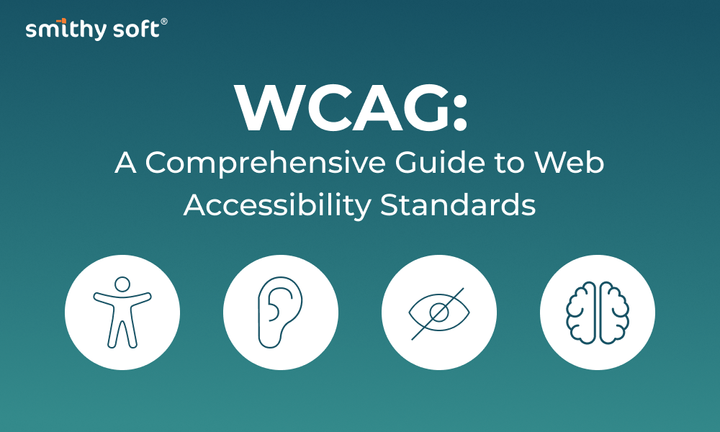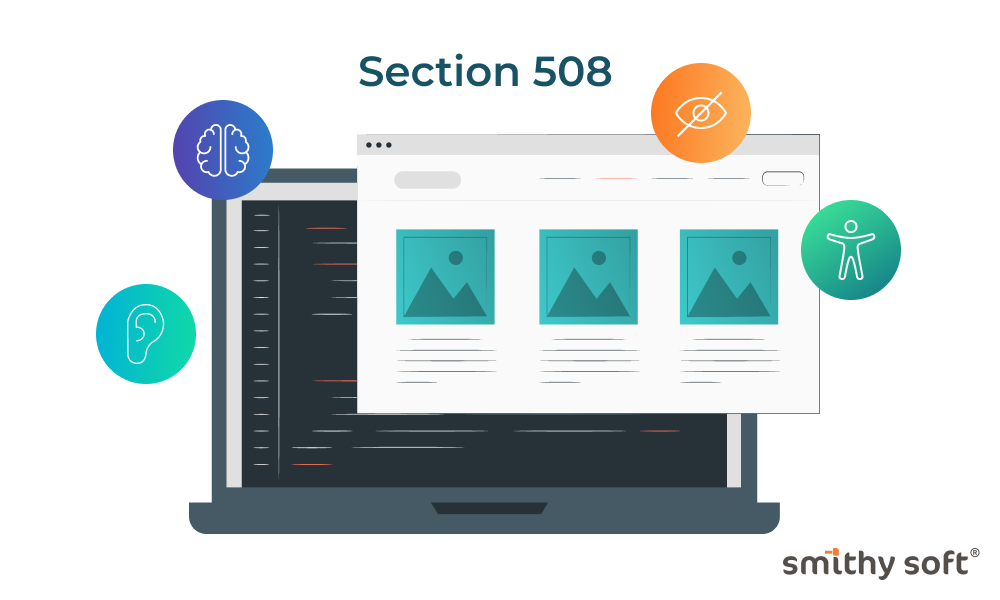Why is mobile accessibility so important?

Mobile phones have become an essential part of our lives: communication, education, research, entertainment, navigation, shopping, social media, and more. The use of mobile phones continues to grow and will continue to do so because it is convenient, cost-effective, and beneficial.
Some compelling figures:
- As of 2023, there are approximately 6.92 billion smartphone users worldwide, accounting for 86.29% of the global population.
- The number of unique mobile phone users has increased by over 3% in the last year, adding 168 million new users.
- In 2023, 81,6% of Americans, or 270 million people, own smartphones. Americans check their phones 96 times daily on average, or once every 10 minutes.
- The average American touches their phone 2,617 times a day. For active users, this number can exceed 5,000. In total, the average smartphone owner unlocks their phone at least 150 times a day.
- The average American spends 5 hours and 24 minutes on their mobile device each day.
The use of smartphones and tablets as primary devices for internet access has become widespread. Some users do not have desktop computers or don't have immediate access to them and rely solely on mobile devices. Therefore, it is crucial to develop mobile apps and websites accessible to all users.
How many people require special needs programs?
It is impossible to provide an exact figure. According to the WHO, 15% of the world's population officially has some form of disability, equivalent to 1.2 billion people. However, the actual number of people who need special needs programs is much higher because not everyone documents their disability.
In addition, older people essentially require special programs because their vision, hearing, motor skills, etc., deteriorate. Therefore, they need mobile programs that enhance device accessibility for people with disabilities.
Legal Aspects
Digital accessibility is a civil right for people with disabilities. Therefore, ensuring mobile accessibility can save you from potential legal issues, such as lawsuits filed for discrimination.
Legislative requirements and guidelines for the accessibility of mobile programs vary depending on the country and jurisdiction. For example, in the United States, the accessibility of mobile applications is regulated by the Americans with Disabilities Act (ADA) and Section 508 of the Rehabilitation Act.
ADA prohibits discrimination based on disability in places of public accommodation, which includes websites and mobile applications. Section 508 specifically applies to federal agencies, requiring them to make their electronic and information technologies accessible to people with disabilities.
In addition to legal requirements, there are also guidelines developed by international organizations. So, for example, in the case of the United States, keep in mind:
- Section 508: A US law that requires federal and associated companies to make technology and electronic data accessible to everyone, including people with disabilities.
- ADA: The Americans with Disabilities Act mandates businesses to make electronic content accessible to people with disabilities.
- WCAG: Web Content Accessibility Guidelines (WCAG 2.1) are a standard set of guidelines explaining how to make your electronic content accessible to everyone.
While WCAG is a technical document, it does not impose significant restrictions on mobile app developers. It can be quite useful and help you reduce long-term costs for your product to reach a broader user base.
Adhering to WCAG standards involves employing accurate semantic markup. When your application embraces appropriate semantics, it seamlessly integrates with a broader spectrum of technologies. That, in turn, facilitates the incorporation of new features and the seamless updating of existing ones.
Responsive design is a pivotal aspect of WCAG compliance, emphasizing the need for content to be reflowed. In the context of mobile applications, non-responsive content poses reliability issues on diverse screens. Hence, prioritizing reflow becomes imperative to ensure optimal functionality.
Another WCAG requirement involves features that necessitate pointer gestures, emphasizing operability with a single pointer without relying on path-based gestures. Adhering to this criterion ensures your content is accessible to a broader range of users.
While certain WCAG criteria are specifically tailored for users with distinct disabilities, they essentially reinforce fundamental best practices. For instance, incorporating alternative text (alt text) for visual content is a relatively quick task but significantly enhances the accessibility of your product for users relying on screen readers and text-to-speech applications.
Tip: Make sure to include accessibility testing at the EARLY stages of your software development.
Learn about Accessibility
Ensure your designers and developers familiarize themselves with accessibility guidelines, such as WCAG 2.1, so they can understand best practices and requirements.
Start with Design
Pay special attention to color contrast, font size, and spacing between layouts to ensure your content is accessible. Also, ensure that all controls and buttons are properly labeled for seamless integration with screen reading technology.
Be mindful of the color contrast, as it is crucial for mobile accessibility, ensuring that text and other visual elements are legible and noticeable, especially for people with visual impairments or color perception deficiencies.
To be accessible, your website should comply with WCAG guidelines for colors and contrast. For regular text, the contrast ratio should be 4.5:1. As for large text, it should be 3:1. Additionally, any information on the web page conveyed using color should also be accessible through other means. An example of this is linked text, typically represented by underlined text.
Responsive Design
It ensures optimal interaction with users on various screen sizes and devices, eliminating the need for separate mobile versions. See to it that when a user decides to increase the font size, elements in your application adjust accordingly, maintaining a consistent and user-friendly interface. Responsive design also ensures future accessibility by adapting to new technologies.
Alternative Text for Images
Users with visual impairments often find it challenging to understand information and context presented in images. To assist them, textual alternatives need to be provided by adding information to the alt or title tags of the media. The purpose of the text is to deliver a complete description of essential aspects of the image, offering full context and understanding for the user.
Touch Targets
Mobile devices have significantly smaller display sizes than traditional computer screens. However, for accessibility, website owners must ensure that all elements on their page are sufficiently large and spaced at an adequate distance for users with smaller screens to touch them easily.
Some of the best practices for implementing appropriately sized touch targets include designing them at least 9x9 mm (in height and width). Additionally, touch buttons and elements should be placed in easily accessible locations, allowing flexible use of all interactive elements.
Consistent Layouts
Consistent layout is crucial for mobile accessibility as it promotes ease of use, familiarity, and efficiency for users with disabilities. Users with visual or cognitive impairments rely on consistency to understand and predict the placement of elements in the interface. When elements consistently appear in expected locations, users can quickly locate and interact with them, reducing cognitive load and improving the overall user experience.
Moreover, consistent layout contributes to accessibility for people with limited mobility. Users with limited dexterity benefit from a predictable layout as it allows them to anticipate the position of interactive elements, such as buttons or links. Consistency reduces the need for precise targeting and minimizes the risk of accidental activation, enhancing usability and reducing frustration for users with motor impairments.
Simple Data Input Methods
In recent years, data input on mobile devices has undergone exponential development, allowing users to input data in various ways. Text input methods often take a lot of time, and certain drawbacks significantly complicate them. To make your website and data input methods more accessible, consider reducing the required amount of text. One can do it using selection menus, checkboxes, switches, and the ability to automatically fill in known information, such as location or date.
Consider the Accessibility of Third-Party Developer Tools
It's vital to ensure that third-party developer tools integrated into mobile applications or websites are also designed to be accessible. That includes, for example, calendars or payment services provided by third-party providers.
Apply Effective Testing Methods
Before launch, test your programs to evaluate usability, functionality, and security. That will be more effective and cost-effective than fixing errors after the program has already been launched. Regarding testing for special features, involving people with disabilities in the testing process is highly effective. They can help precisely identify accessibility obstacles so you can address them promptly.


